Hola a todos, cómo se encuentran? Hoy quiero compartirles una forma muy poco ortodoxa, pero muy efectiva para abrir y utilizar un coco de la mejor manera posible, aunque desde aquí tengo que advertirles que no es la mejor forma, y si no tienes cuidado podrás lastimarte.
Hello everyone, how are you? Today I want to share with you a very unorthodox, but very effective way to open and use a coconut in the best possible way, although from here I have to warn you that it is not the best way, and if you are not careful you could hurt yourself.
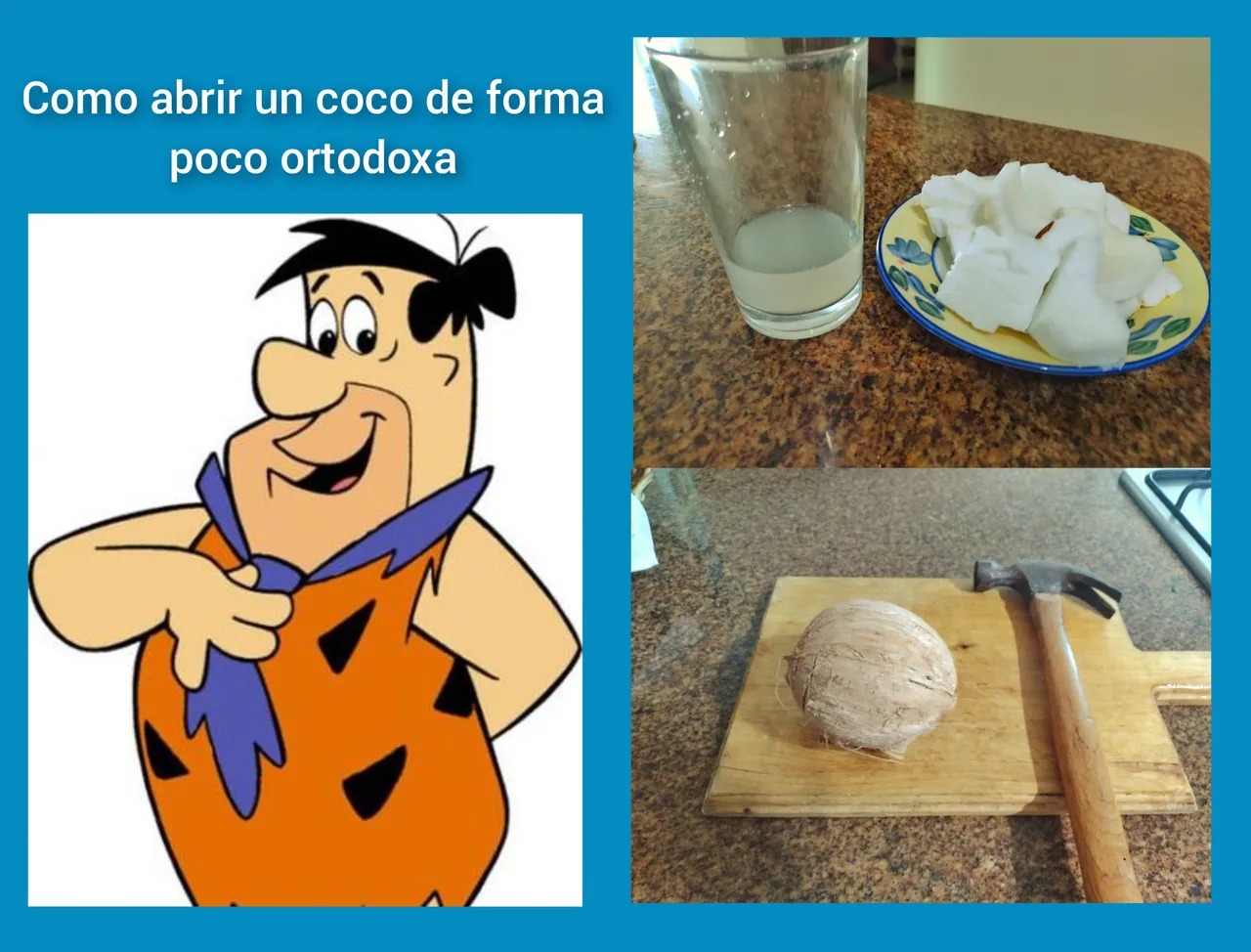
Desde muy pequeño, cuando hacíamos helados de coco o cocadas con panela, está fue la forma en que aprendí hacerlo, por lo que podría decir que ya es como una tradición familiar, a pesar de que he visto que hay otras formas tal vez más seguras para abrirlos.
From a very young age, when we made coconut ice creams or cocadas with panela, this was the way I learned to do it, so I could say that it is already a family tradition, although I have seen that there are other perhaps safer ways to open them.
¿Qué utensilios vamos a utilizar? / What utensils are we going to use?
Lo primero será un martillo, una tabla para que no dañes los topes de la cocina, un cuchillo sin filo y otro con bastante filo para pelar quitarle la piel al coco, y por último un colador para el agua del coco.
The first will be a hammer, a board so that you do not damage the kitchen countertops, a dull knife and another sharp enough to peel and remove the skin from the coconut, and finally a strainer for the coconut water.
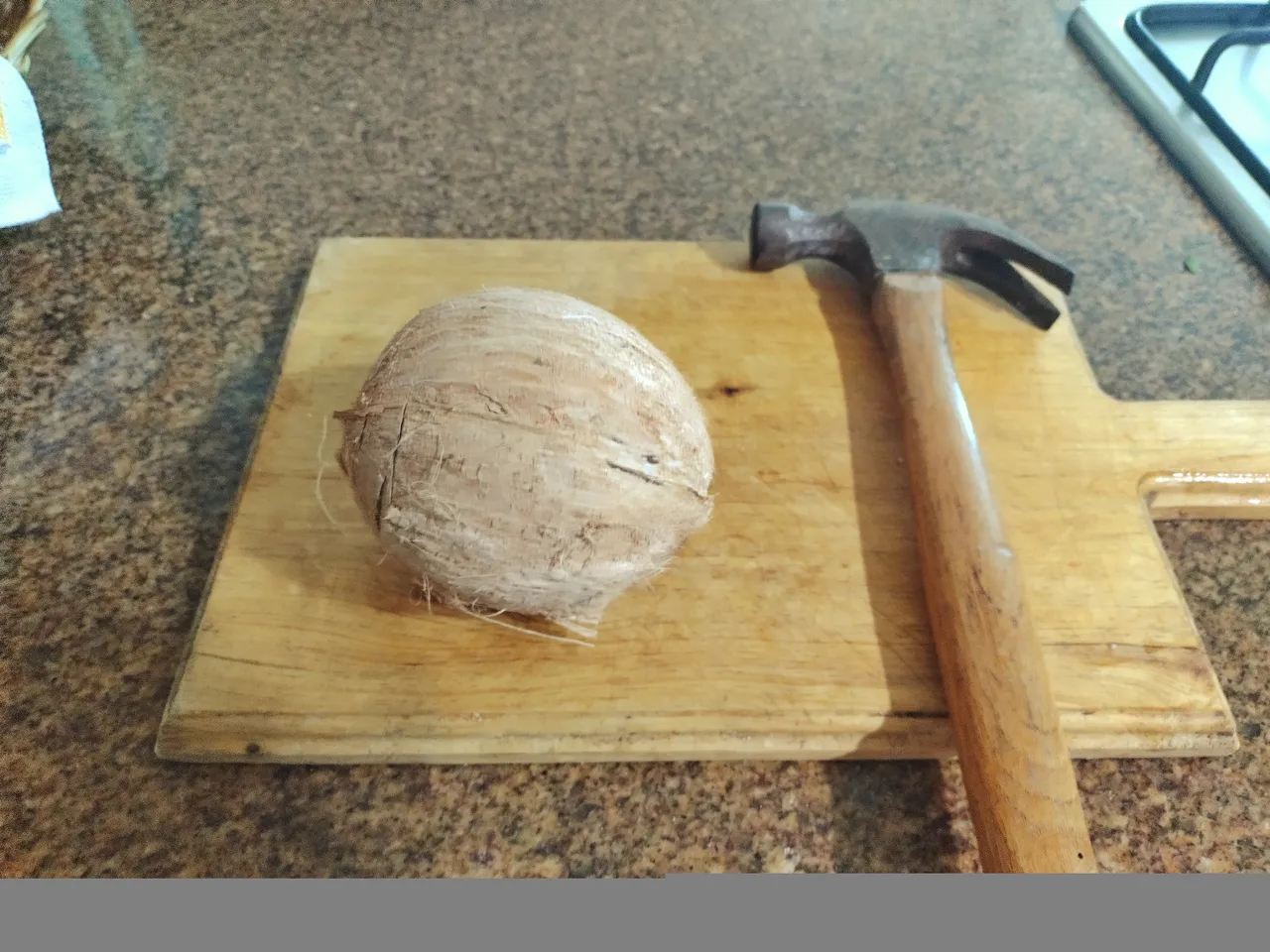
Lo primero es agarrar con una mano el coco y colocar debajo una taza donde recolectar el agua de coco que caerá al abrir el coco. Con la otra mano, vamos a darle unos golpes por toda la superficie hasta que logremos hacer una grieta, utiliza tu mano más hábil para que no te lastimes con el martillo.
The first thing is to grab the coconut with one hand and place a cup underneath where to collect the coconut water that will fall when opening the coconut. With the other hand, we are going to hit it all over the surface until we manage to make a crack, use your most skilled hand so that you do not hurt yourself with the hammer.
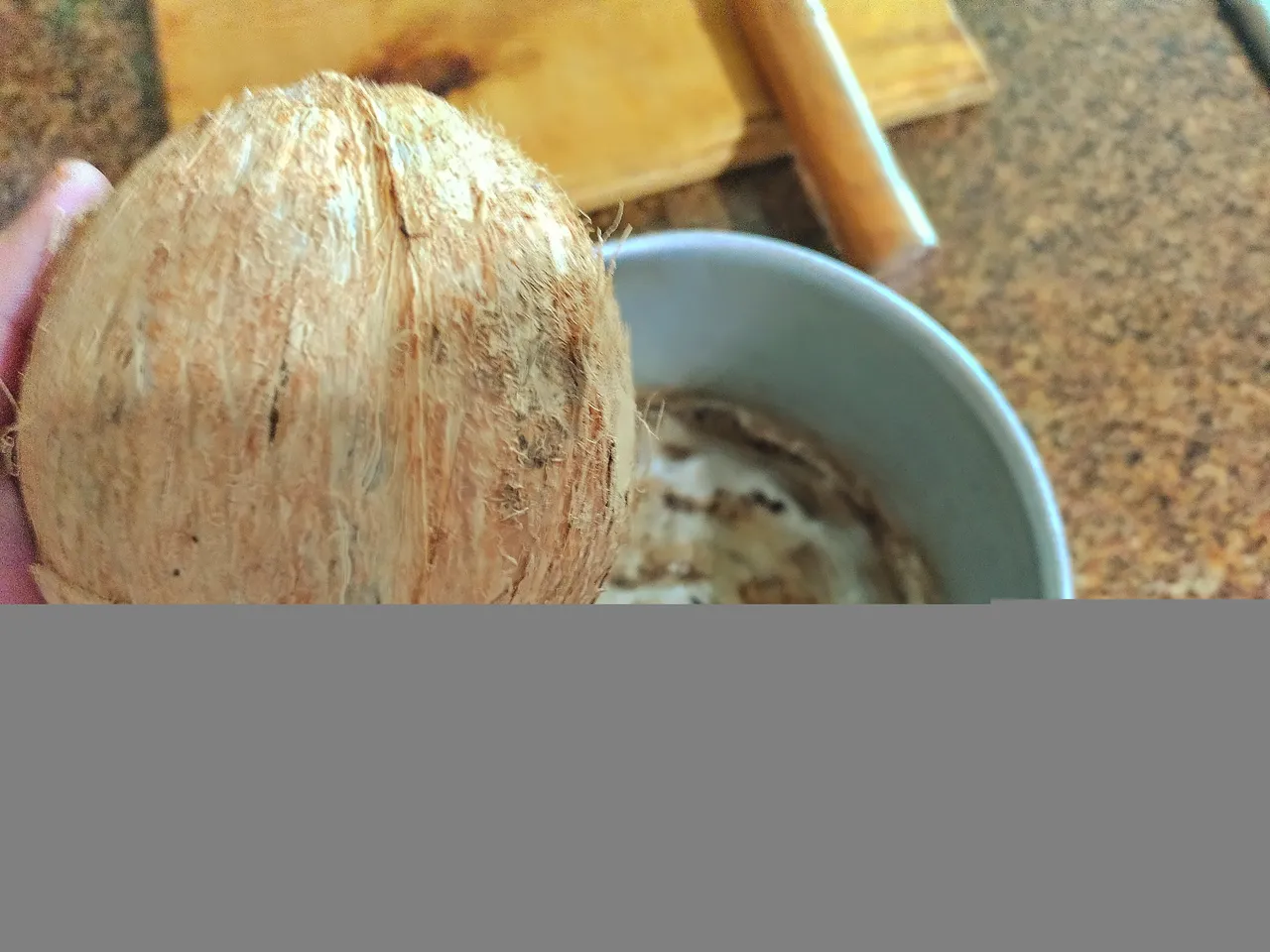
Una vez que se forme una grieta, sigue dándole golpes por esa zona, para abrir en todo su circunferencia el coco. Al mismo tiempo, debes estar pendiente para que no pierdas el agua de coco.
Once a crack forms, keep hitting it in that area, to open the coconut around its entire circumference. At the same time, you must be aware so that you do not lose the coconut water.
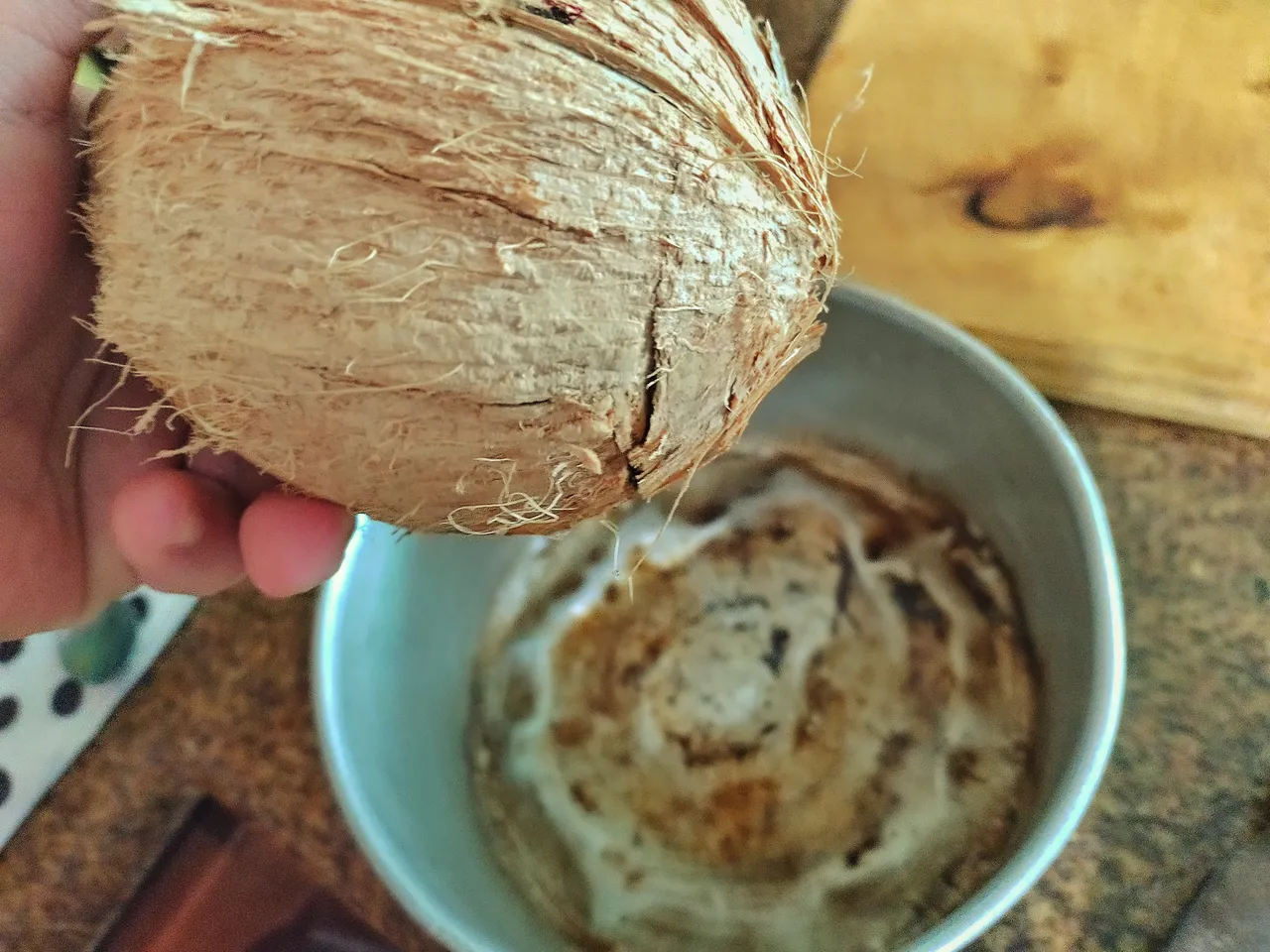
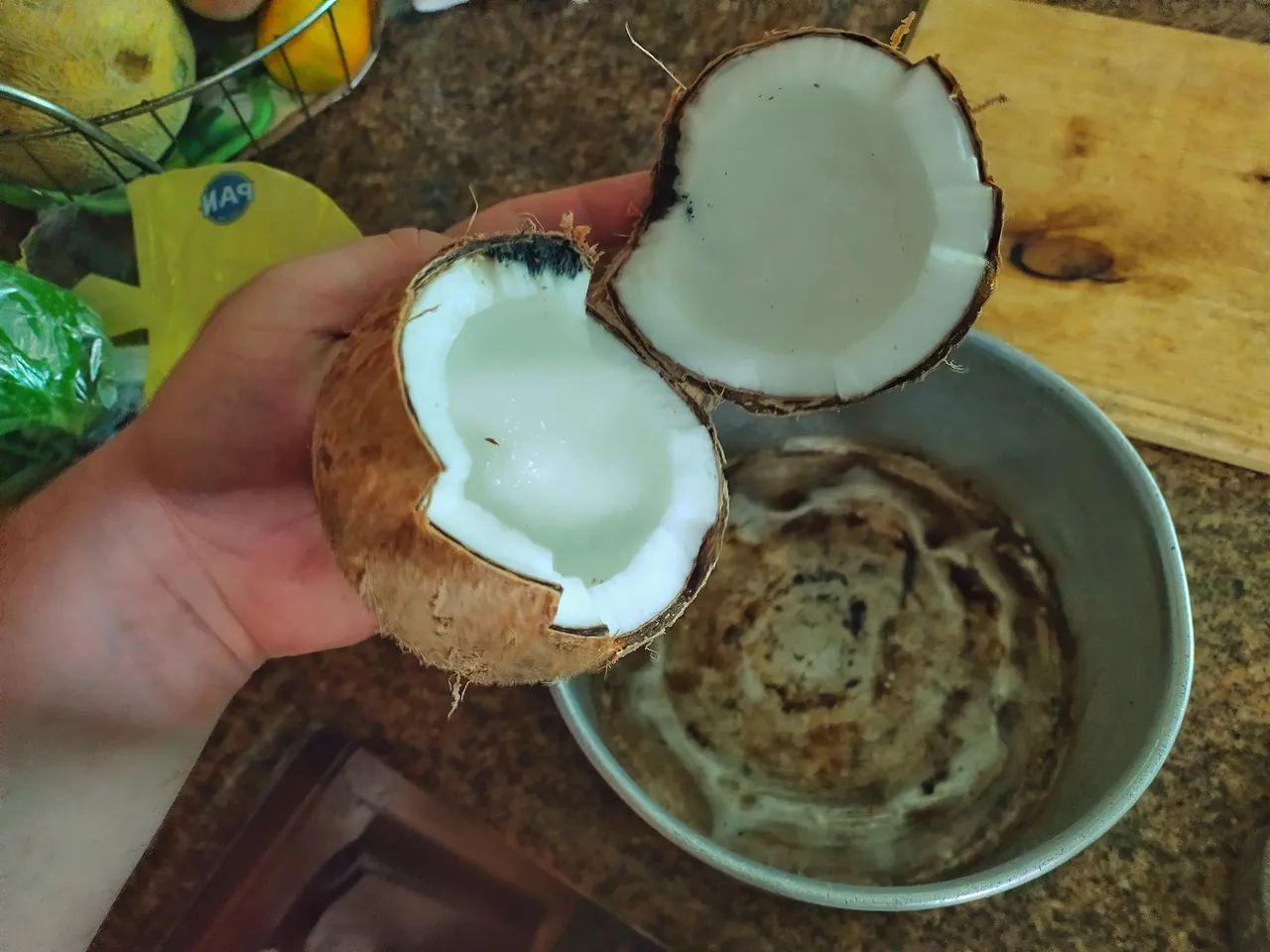
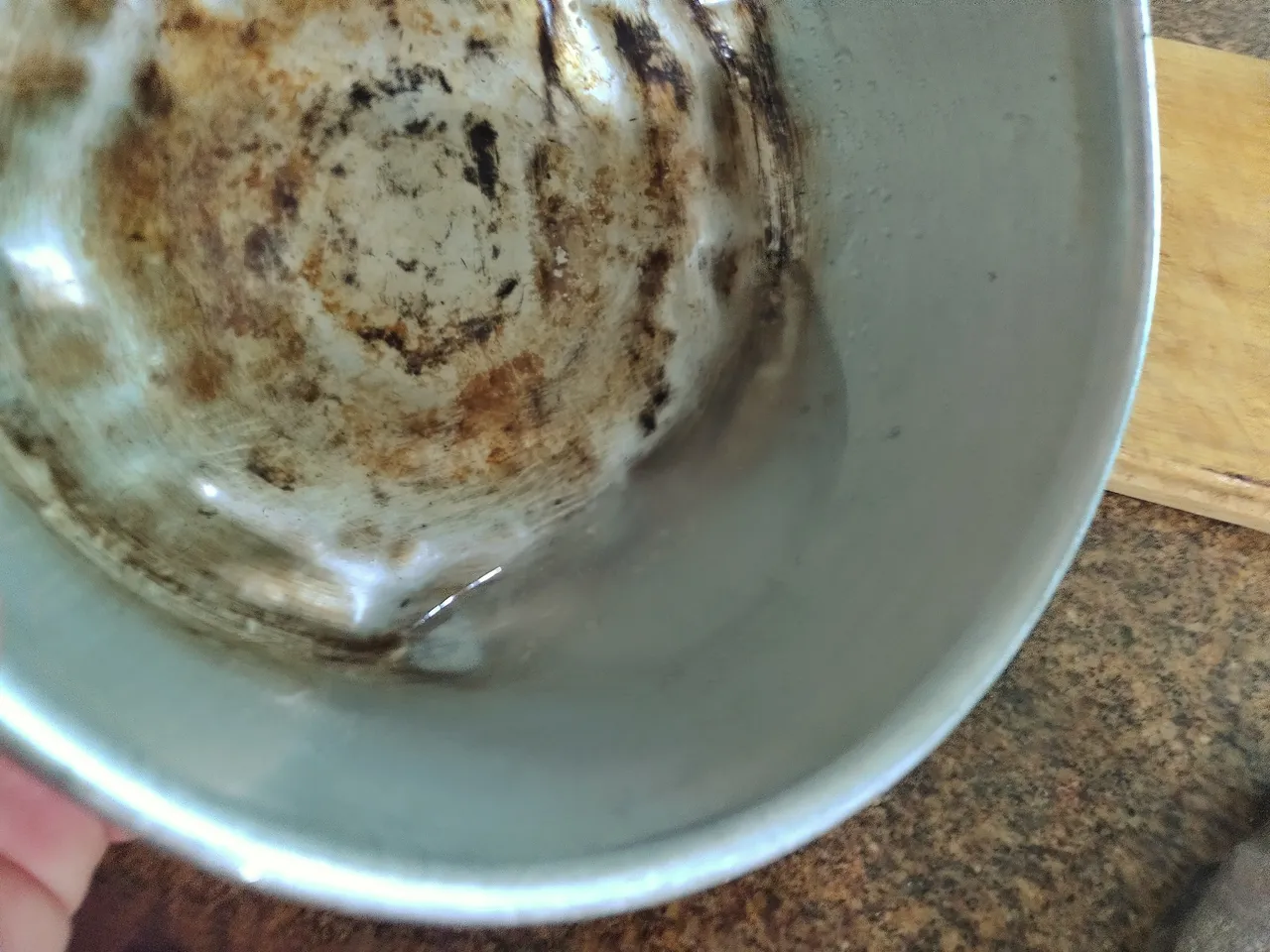
Ahora, con mucho cuidado golpearemos las mitades de los cocos para romper la cáscara en varias partes, para que sea más fácil obtener la carne.
Now, very carefully we will beat the halves of the coconuts to break the shell into several parts, so that it is easier to obtain the meat.
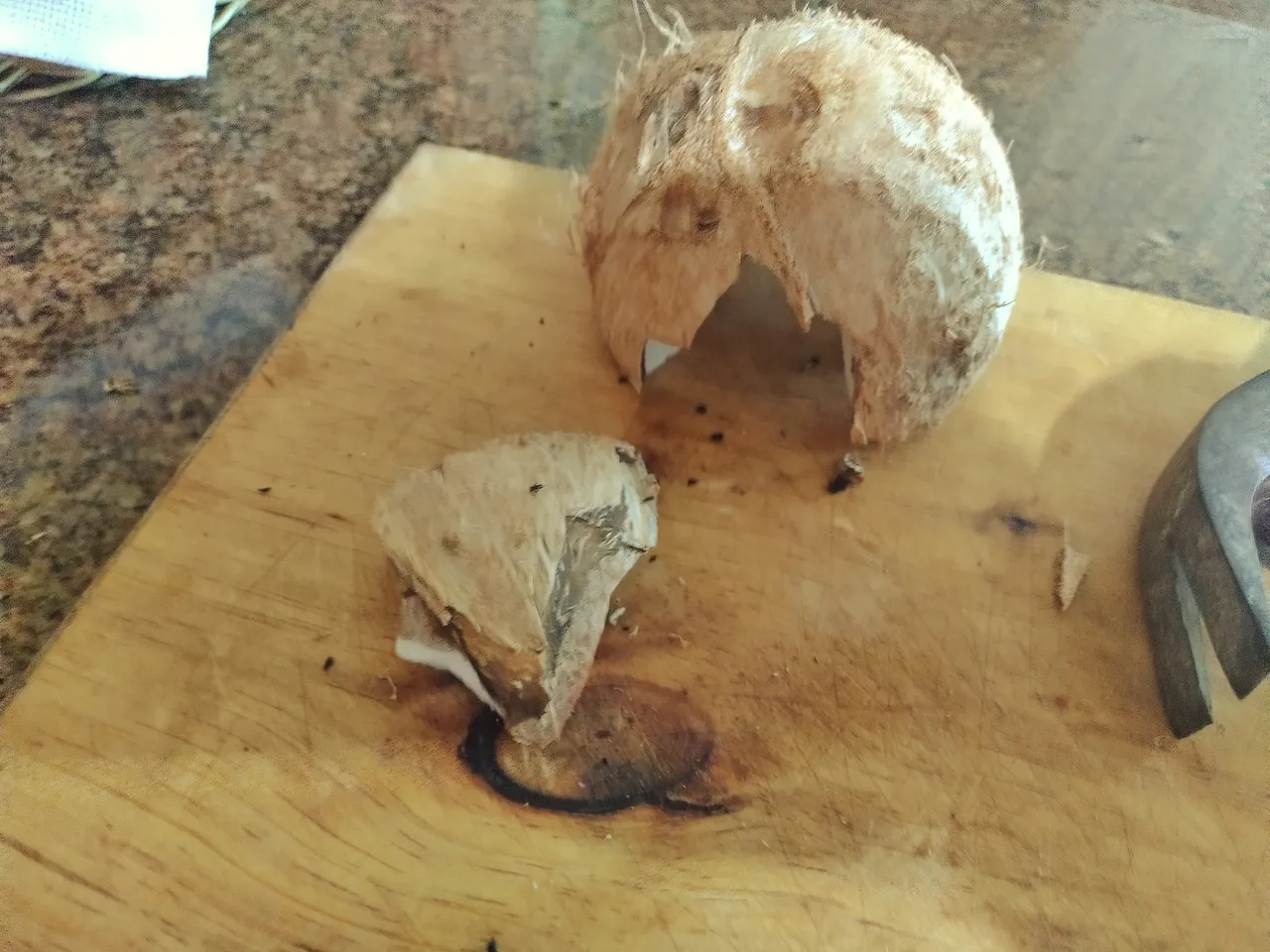
Con ayuda del cuchillo sin filo, vamos a quitarle la cáscara a todos los trozos de carne blanca, para luego sacarle más fácilmente la parte marrón o la corteza más interna.
With the help of the blunt knife, we are going to remove the skin from all the pieces of white meat, to later remove the brown part or the innermost crust more easily.
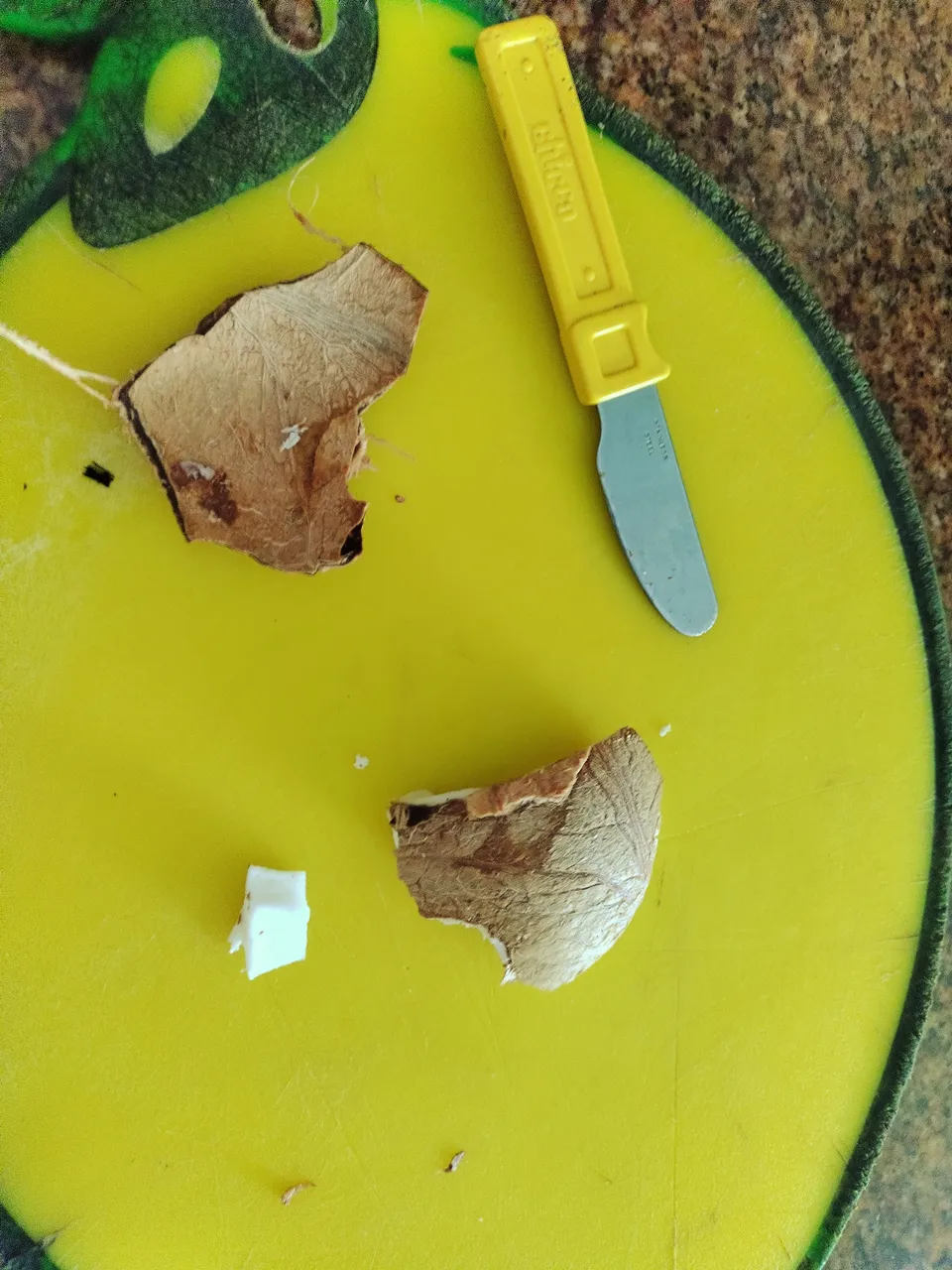
Para hacerlo, introduciremos el cuchillo sin filo entre las cáscaras y con una leve tracción, saldrá muy fácilmente.
To do this, we will introduce the blunt knife between the shells and with a slight traction, it will come out very easily.
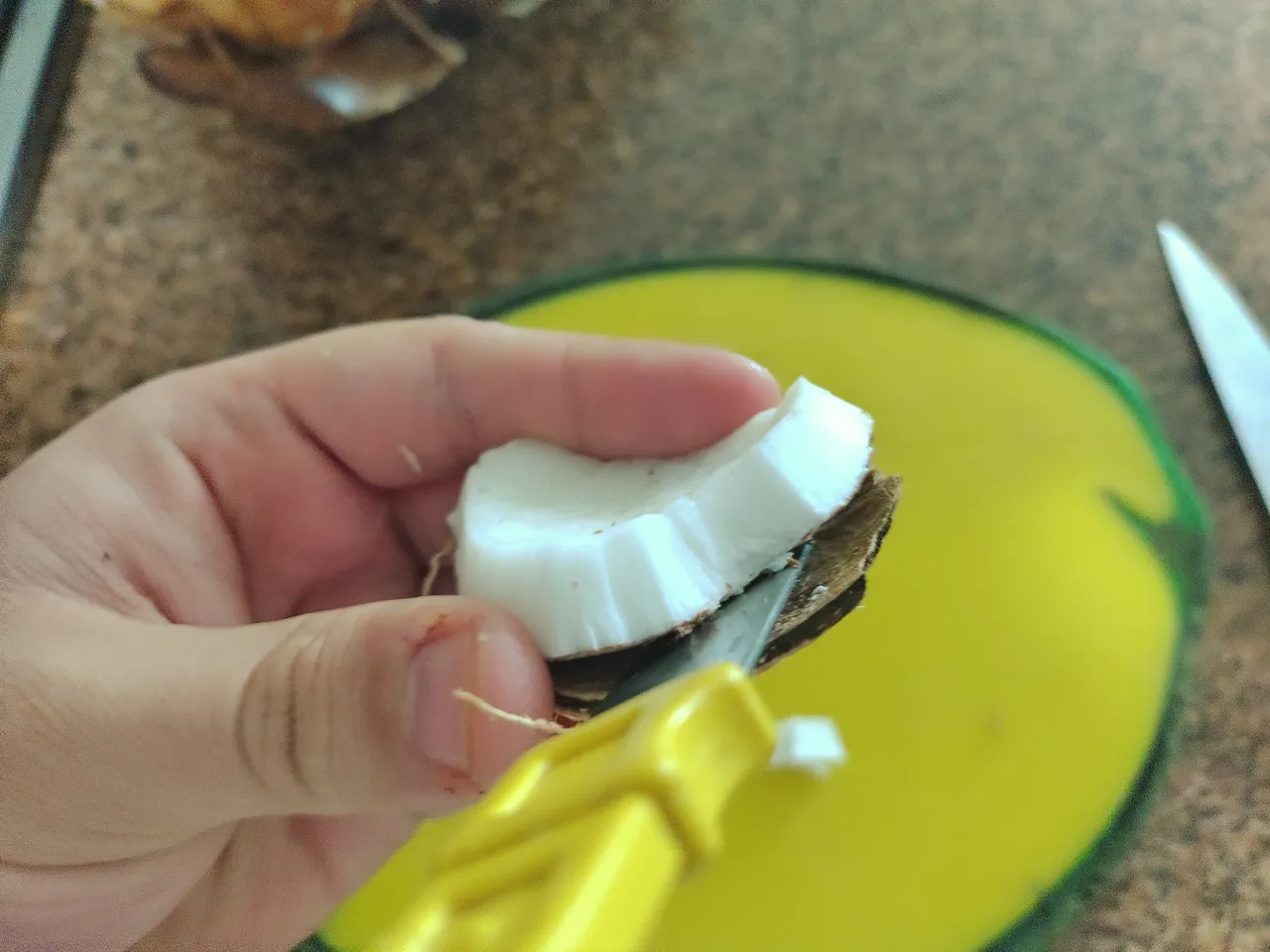
Luego, ya con el cuchillo con filo solo tenemos que pelar el coco y estará listo para comer.
Then, with the sharp knife, we just have to peel the coconut and it will be ready to eat.
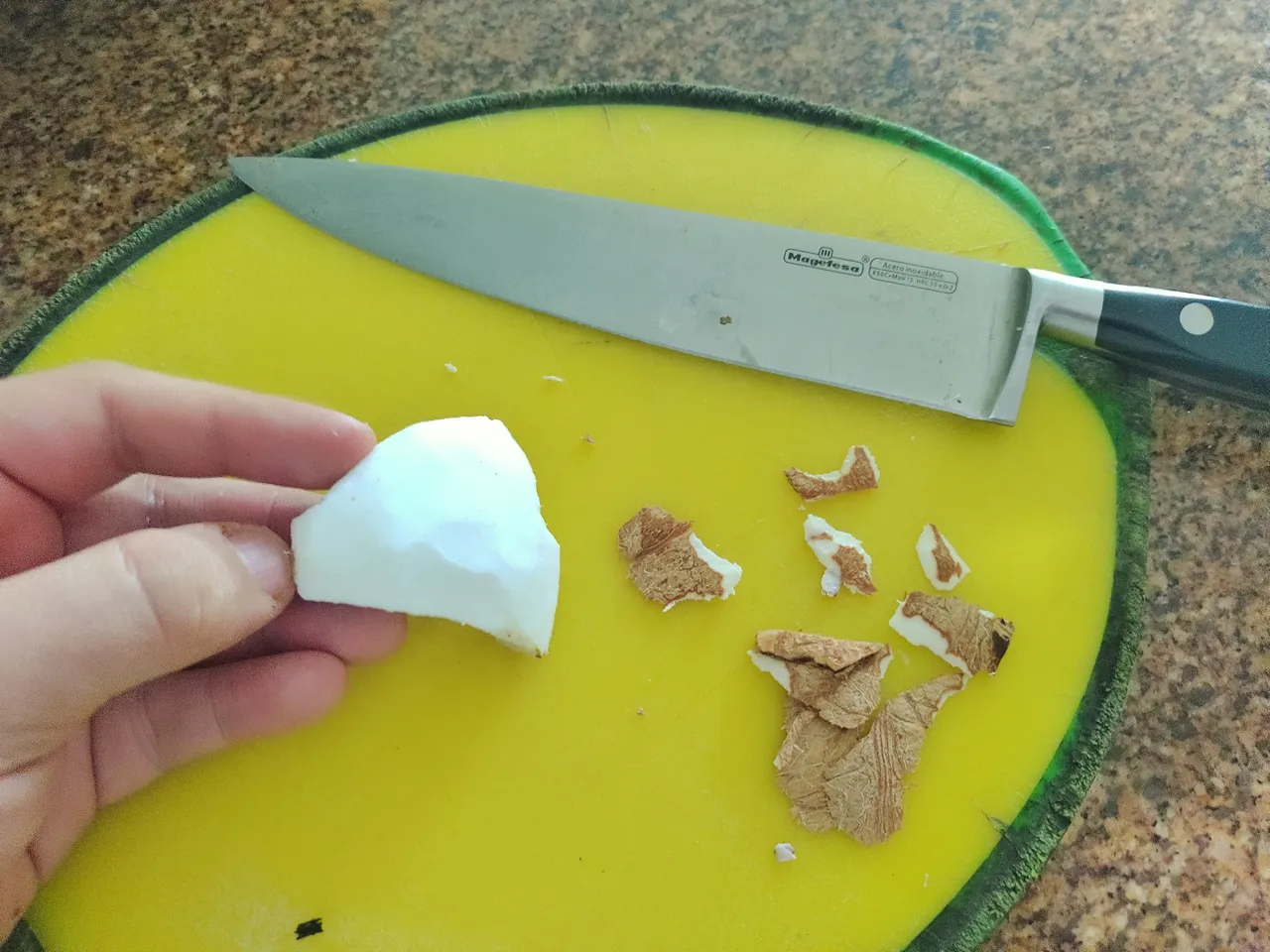
El agua de coco vamos a colarla, ya que siempre quedan pelitos de la corteza de coco o trozos de corteza. Si quieres puedes refrigerar el agua de coco y será una forma muy buena para hidratarnos después de hacer ejercicio, también quedará muy bien si preparas un whisky y le agregas un poco de esta agua, o en un batido también quedará muy delicioso.
We are going to strain the coconut water, since there are always little hairs from the coconut bark or pieces of bark. If you want, you can refrigerate the coconut water and it will be a very good way to hydrate ourselves after exercising, it will also be very good if you prepare a whiskey and add a little of this water, or in a smoothie it will also be very delicious.
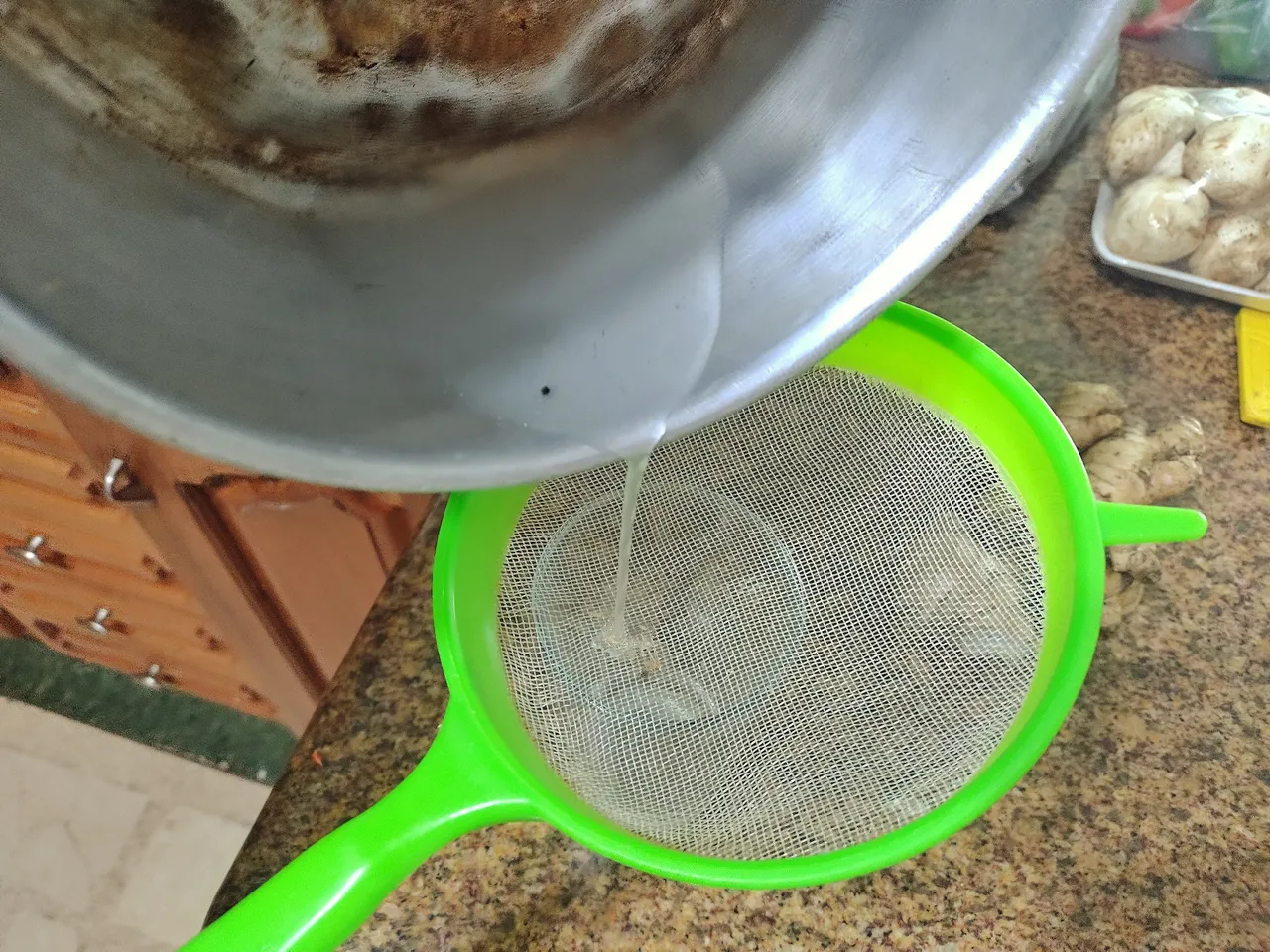
Cuando estés pelando el coco, evita estas partes negras, ya que están malas, también observa bien el agua, ya que si toma una coloración rara, puede que el coco este un poco pasado.
When you are peeling the coconut, avoid these black parts, since they are bad, also observe the water well, since if it takes a strange color, the coconut may be a little old.

Cuando termines de hacer todo esto, este será el resultado final. El coco tiene muchos usos, no solo para postres, ya que también puedes utilizarlo en ensaladas o en platos salados con camarones, por ejemplo.
When you are done doing all of this, this will be the end result. Coconut has many uses, not only for desserts, since you can also use it in salads or in savory dishes with shrimp, for example.
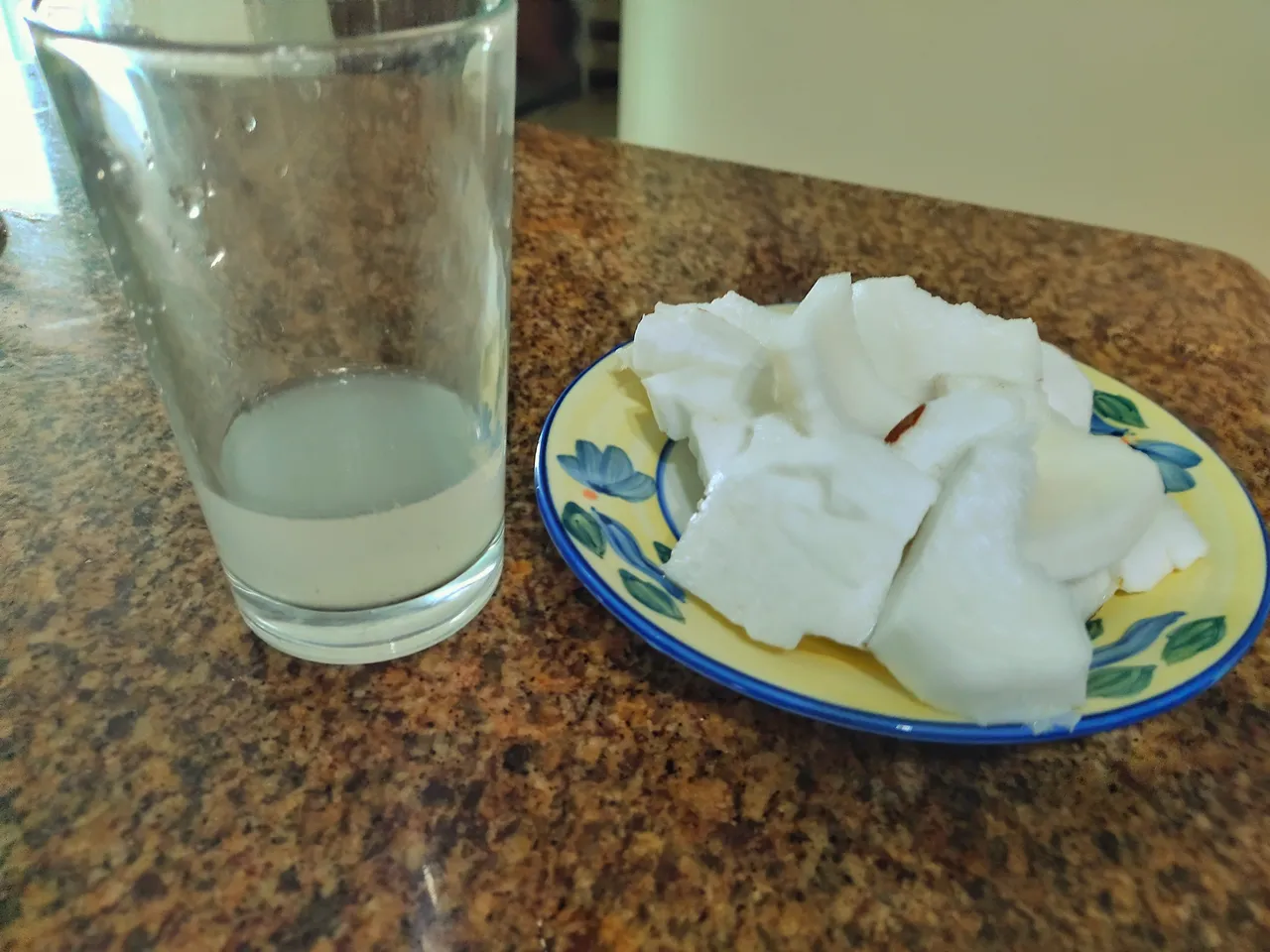
También quería mostrarles como hacer un vaso con un coco, para servir bebidas como cocadas o servir unos camarones rebozado, pero por mala suerte el segundo coco estaba dañado, así que en una siguiente oportunidad se los compartiré!
I also wanted to show you how to make a glass with a coconut, to serve drinks like cocadas or serve some battered shrimp, but unfortunately the second coconut was damaged, so in a next opportunity I will share them with you!
De igual forma observen la diferencia del coco de la carne blanca, de la textura de la misma y del color del agua, que tiene como una coloración un poco más marrón. Su olor no es demasiado fuerte, por lo que no podemos confiarnos del todo de nuestro olfato.
In the same way, observe the difference of the coconut from the white meat, its texture and the color of the water, which has a slightly more brown color. Its smell is not too strong, so we cannot completely trust our smell.

